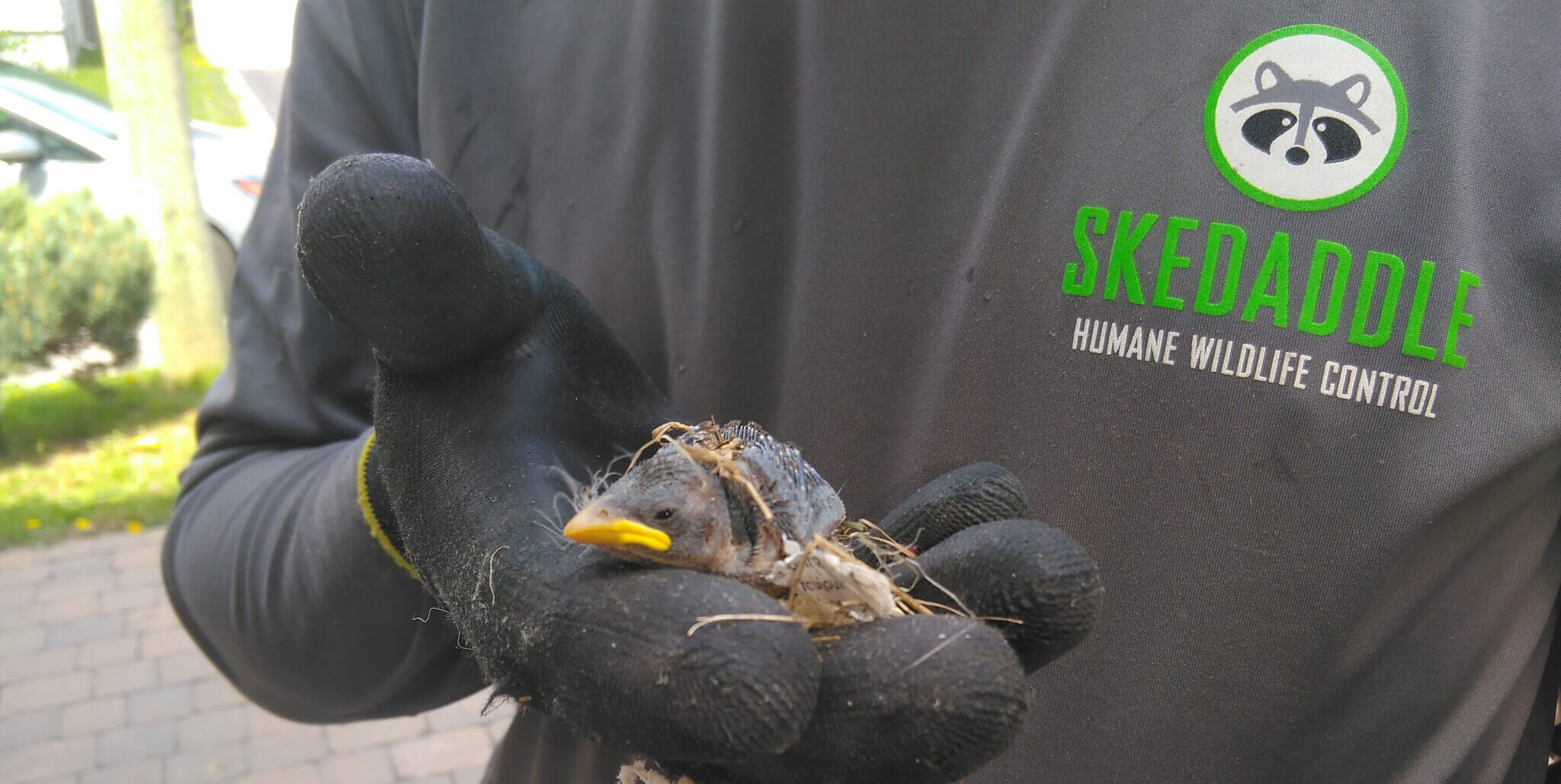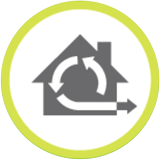
Need help today? Don't wait
> FIND A LOCATIONBirds
WHAT ARE BIRDS DOING ON YOUR PROPERTY
When birds of a feather flock together around your home or business, it can get pretty messy. Pigeons, sparrows and starlings leave behind nests and droppings that can cause serious health problems and frustration for humans forced to share their home with a flight of unwanted winged lodgers.
WHAT WE DO FOR YOU
Every bird removal requires a unique game plan that takes into account the type of species, the location of the birds and the behaviour they’re exhibiting. Hiring professionals that know which tools, techniques and strategies to use saves howanted winged lodgers.meowners money in the long run, while protecting their property from further damage. Our technicians know where to look for droppings, and are trained to identify any potential fire hazards created by bird nesting material. Once our technicians have had the chance to evaluate the situation, they will walk you through their findings and their removal, clean-up and prevention plan.
Whether you have pigeons roosting on your roof or starlings nesting inside your bathroom fan vent, one of the biggest challenges to resolving a bird issue is safely accessing the areas of concern. Determining which exclusion methods and deterrents work best to keep birds aways can make the process even more complex. Skedaddle technicians are trained in ladder and roof safety to access all the hard-to-reach areas birds love to clean the mess they leave behind. Skedaddle’s hands-on approach to bird removal has been refined for over 30 years and is backed by a lifetime guarantee. The team at Skedaddle is always available to help if any issues arise in the future, and ensure that your bird problem has flown away for good.
WHY YOU NEED BIRD REMOVAL SERVICES
Problems with birds can affect both homes and businesses in and older communities and newly built developments. Vent openings, soffits and chimneys are common areas that birds like starlings and sparrows will use to enter homes and nest. Taller and larger structures like commercial businesses and high-rises attract pigeons and gulls in great numbers. When it comes to excluding and deterring birds, there are many techniques and products available. No matter the size of the problem, understanding bird behaviour and building construction is critical to effectively resolving any bird issue. Skedaddle’s team of professionals has over 30 years of experience developing and deploying bird removal and prevention strategies.
Once birds have nested on a property, they are capable of creating costly damage to ventilation systems and building materials. Starlings stuff dry materials, like grass and twigs, into vents to build their nests, leading to fire danger. Acidic bird droppings can permanently stain brick, siding and stucco, and cleaning must be done with care and proper protective equipment. When disturbed bird droppings can become airborne and if inhaled can lead to health problems. Skedaddle technicians come prepared with the protective equipment needed to safely clear every trace of birds and their droppings safely from your home.
The arrival of baby birds can make removals more complicated. Most bird species nest and lay their eggs in the early spring and summer months, while pigeons are capable of nesting throughout the year. For the first three weeks of their lives most chicks are dependent on their mothers care from the nest, and are still unable to fly. This means removal must wait until all the birds are able to fly and a thorough cleanup can take place.
The rare exception when babies can be safely moved applies to young starlings nesting in areas like kitchen or bathroom vents. In these cases, babies can be gently removed from the duct by hand and placed in a substitute nest container until they are ready to fly. Once the family is out, the opening to the vent is screened off to re-entry and the parents move into the temporary nest we’ve secured to the exterior wall. From there they can continue to look after the babies until they are ready to fly at which point Skedaddle will return to remove the nesting container. Professional removal is critical during this time to ensure the proper methods are used and that no babies or nesting material are left behind in the duct.

Understanding Bird Behaviour During Summer
Bird activity during the summer shifts with the rising temperatures. Many birds reduce their daytime activity during heatwaves, seeking out cooler nesting locations in urban environments. Attics, sheds, soffits, eavestroughs, vents, and porches become common nest sites, especially if they’re shaded and undisturbed. The nesting materials birds bring in—often dry grass, twigs, and other debris—can pose a fire risk and may block airflow in key parts of your home.
Birds breed from early spring into late summer. Depending on the species, eggs hatch anywhere from 10 to 30 days after being laid. During this time, both parents are often actively feeding and protecting their young. If a bird family settles into your home, removal must be handled carefully to avoid separating the mother from her chicks. Skedaddle technicians are trained in safe bird removal techniques that prioritize family reunification and humane treatment.
While nesting, birds use clever techniques to regulate their body temperature. They cool off using bird baths or shallow puddles, and some species pant like dogs by opening their beaks. Others lift their feathers to allow airflow to reach the skin. These behaviours can be charming to observe—but their nests inside your vents or attic are no laughing matter.
If you spot bird activity around your roofline, vents, or exterior fixtures, call Skedaddle before the situation escalates. Our team can remove active nests safely and install deterrents to prevent future nesting. Early action ensures your home stays protected while allowing birds to relocate to more suitable habitats.
Warm nest sites like chimneys, attics and vents are prime targets for feathered urbanites. Skedaddle Humane Wildlife Control’s Wildlife Technicians are trained to identify bird entry points, and determine the phase of their breeding cycle. Our technicians have certified ladder and roof safety training to access the high areas that birds love and determine the extent of damage they have created.
To ensure humane and economical wildlife removal, our technicians must remove all birds and nesting material, taking extra care not to disrupt any babies. For younger babies, removal is often completed after they are able to fly the nest, usually within a few weeks. In some cases, baby starlings that are nesting inside vents can be removed by hand and placed in a temporary nest. This allows for technicians to secure the vent while adult birds can still feed and care for their young. This process requires expert advice on bird species and seasonal patterns to complete safely.
Why Do Birds Nest Inside Vents?
How To Remove Birds From A Vent?
Is My Chimney Bird Proof?
Which Bird Species Are Most Likely To Nest In My Home?
How Birds Are Removed From Dryer Vents?
Skedaddle Humane Wildlife Control’s wildlife removal strategy is humane, safe and reliable. Part of our process involves clearing and cleaning any nesting material and droppings can pose serious health risks. This is an important step, because inhaling particles from bird droppings can lead to infections called histoplasmosis and psittacosis. Our technicians will clean all contaminated vents without spreading bacteria or nesting material throughout your home.
To ensure all bacteria and signs of your bird infestation have been cleaned, your Skedaddle wildlife technician will advise cleaning and clearing tactics, like insulation repair and ventilation system inspection – depending on the severity of contamination. This will help ensure a healthy future for you and your family. Any bird droppings left on your home or walkways will be cleaned away, leaving your property safe and clean.
How Can I Clean Bird Droppings?
How to Remove Birds Nests from the Roof?
How To Prevent Bird Damage On My Home?
Why are Bird Nests Dangerous?
The next step in Skedaddle Humane Wildlife Control’s process after humanely removing and safely cleaning up after wildlife, is ensuring that your home and family are protected. The best way to prevent future bird infestations is to deny their access in the first place. Three decades of experience helps our technicians determine the target areas of your home or business and which exclusion or deterrent products are necessary to resolve the issue. For smaller openings, our technicians expertly screen and seal bird entry points while larger spaces can be protected with netting systems that can cover areas thousands of square feet in size.To prevent birds from roosting on your home or business, our technicians deploy bird deterrent strategies that keep them from landing and settling in. Visual and physical deterrents are designed to make birds uncomfortable and force them to move off your property. Knowing which products to use, and where to install them to achieve results takes experience and skill. Our wildlife technicians specialize in ensuring that your home and your family are protected as part of the Skedaddle Humane Wildlife Control customer service experience.
How to Keep Birds Off My Property
Does DIY Bird Removal Work?
What are Bird Exclusion Products?
Bird Prevention Techniques
What Are The Best Bird Deterrents?
COMMON BIRD QUESTIONS
WHAT KIND OF BIRD IS NESTING IN MY VENT?
Starlings are cavity nesters and love to nest inside dryer, kitchen and bathroom exhaust vents found on the outside walls of homes. These openings provide shelter from the elements and a safe place for mothers to raise their babies. When building their nest, starlings leave droppings and dry materials behind, creating serious fire and safety hazards.
ARE BIRD DROPPINGS DANGEROUS?
Yes, bird droppings carry diseases that are transmissible to people and pets. Some of the most common diseases found in bird droppings are; salmonellosis, histoplasmosis and psittacosis. All of these diseases can cause serious side effects or respiratory illness when left untreated. Bird droppings can easily spread throughout a home during infestations or improper cleaning.
WHICH BIRDS ARE PROTECTED?
The Migratory Bird Act protects hundreds of different species of native birds in North America, with the goal of ensuring all populations thrive and can safely complete seasonal cycles. Common bird species found near homes and businesses that are not protected by the Act include the house sparrow, the European starling, and pigeons. All three of these species are not protected because they are not native to North America.
WHEN DO BIRDS NEST?
Birds nest and lay their eggs in the early spring and summer months, with babies hatching anywhere from 10-30 days later. Unlike other bird species, pigeons can nest throughout the year if conditions are right.
CAN I DETER BIRDS WITH A DECOY OWL?
Store bought or DIY bird deterrent methods, such as decoy owls, might offer some short term relief but with time birds learn that fake owls are no threat and eventually return. In most cases more complex exclusion and deterrent techniques are required.
WILL A BIRD ABANDON THEIR BABY BIRDS IF I TOUCH THEM?
No, birds do not have a sense of smell and will not abandon their baby after you touch them. A mother bird may abandon a chick if they determine they are not as strong as the other chicks in the nest. This strengthens the probability that her other chicks will thrive. It is important to avoid interacting with wildlife unless absolutely necessary and only move chicks from a location if they are injured.
CALL US TODAY
1.888.592.0387
OR
Request for Services







